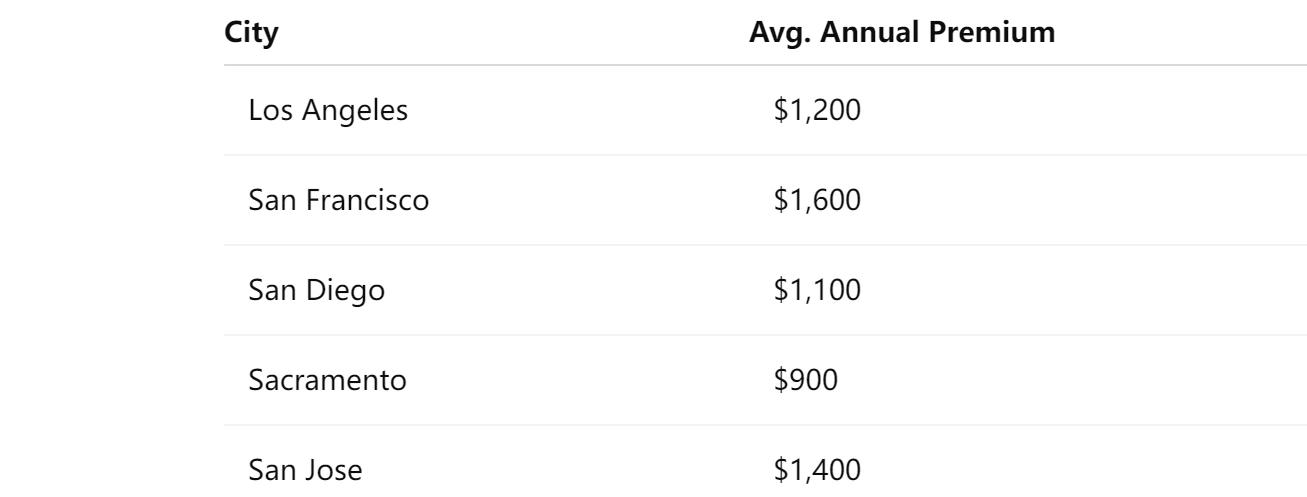California Home Insurance Guide 2025: Safeguard Your Golden State Home
Published on July 17, 2025
🏡 California Home Insurance Guide 2025: Safeguard Your Golden State Home
Introduction
In California’s diverse landscape—where wildfires threaten Northern forests, earthquakes rattle the Bay Area, and coastal storms batter Southern shores—having the right homeowners insurance in California is essential. Beyond mere compliance, your policy can protect your investment and finances when disaster strikes.
This 2025 guide helps you choose between HO-3 and HO-5 insurance, analyze average home insurance premiums by city, and implement expert strategies to secure affordable home insurance in California without sacrificing coverage.
1. Policy Choice: HO-3 vs. HO-5 Coverage
HO-3 (Standard Form)
- Named-peril protection: Covers your dwelling against specified risks like fire, windstorm, and theft
- Personal property: Insures belongings (furniture, electronics) on a named-peril basis
- Cost-effective: Typically 15–20% cheaper than HO-5 for similar dwelling coverage
HO-5 (Comprehensive Form)
- Open-peril coverage: Protects home and personal property against all risks except those specifically excluded
- Higher limits: Better suited for high-value structures and collections
- Premium impact: Costs 20–30% more but reduces out-of-pocket expenses for unexpected damage
Recommendation: Choose HO-5 if your replacement cost exceeds $750,000 or you own high-value items; otherwise, HO-3 delivers robust protection at a lower cost.
2. Premium Snapshot: Los Angeles vs. San Francisco
Location drives your California home insurance premium. For a 2,000 sq ft home with $500,000 dwelling coverage:

- San Francisco: Higher rebuild costs and seismic risk push premiums up.
- Sacramento: Lower land values and milder weather keep rates competitive.
Regularly comparing California home insurance quotes by ZIP code ensures you capitalize on local market variations.
3. Core Coverage Elements for California Homes
Every policy should clearly define:
- Dwelling Coverage: Funds to rebuild your home after covered perils
- Personal Property: Reimbursement for belongings inside your home
- Liability Protection: Covers legal and medical expenses if someone is injured on your property
- Additional Living Expenses (ALE): Pays for temporary housing if your home is uninhabitable
Pro Tip: Review your Replacement Cost Value (RCV) annually to reflect rising construction costs in California’s competitive labor market.
4. Four Cost-Saving Tactics
- Shop and Compare: Get at least five quotes—from national insurers (State Farm, Allstate) and California specialists (CSAA, Farmers)—to find the best rate.
- Bundle Policies: Combine home and auto insurance under one carrier to earn 15–25% off both premiums.
- Invest in Safety Upgrades: Installing wildfire-resistant landscaping, impact-resistant windows, and monitored security systems can earn 10–20% discounts.
- Raise Your Deductible: Increase your deductible to $1,000 or higher if you have emergency savings—this can lower premiums by up to 15%.
Implementing even two of these strategies can translate into hundreds of dollars saved annually on cheap home insurance in California.
5. Must-Have Endorsements for Golden State Risks
Standard policies often exclude key perils—add endorsements to bridge the gaps:
- Earthquake Insurance: Available through the California Earthquake Authority (CEA) to cover structural and foundation damage.
- Wildfire Endorsement: Extends coverage for fire-related losses and smoke damage.
- Flood Insurance: Purchase through FEMA’s NFIP or private carriers for coastal and riverfront properties.
- Scheduled Personal Property: Covers high-value items like fine art and jewelry beyond standard limits.
Adding these options transforms a basic policy into truly comprehensive homeowners insurance in California.
6. Top California Home Insurance Providers in 2025
Consider these carriers for their local expertise and competitive offerings:
- CSAA (AAA Northern California): Specialized in California risks with strong customer satisfaction.
- State Farm: Extensive agent network and robust bundling discounts.
- Allstate: Comprehensive add-on packages and digital tools.
- Farmers Insurance: Custom endorsements for wildfire and earthquake risks.
- USAA: Superior rates and service for military families.
Check each insurer’s claim processing times and user reviews to ensure responsive service when you need it most.
Conclusion
Securing the right California homeowners insurance means blending competitive pricing with coverage tailored to seismic, wildfire, and coastal risks. By comparing HO-3 vs. HO-5 policies, analyzing premium variations by city, and implementing targeted savings tactics, you’ll protect your home and your budget in 2025.